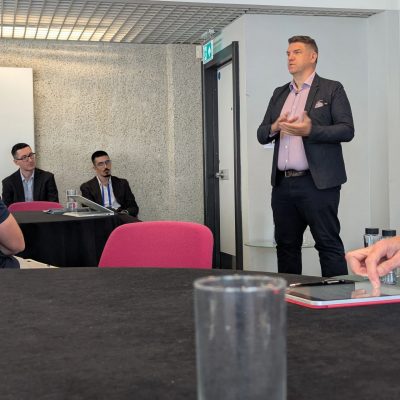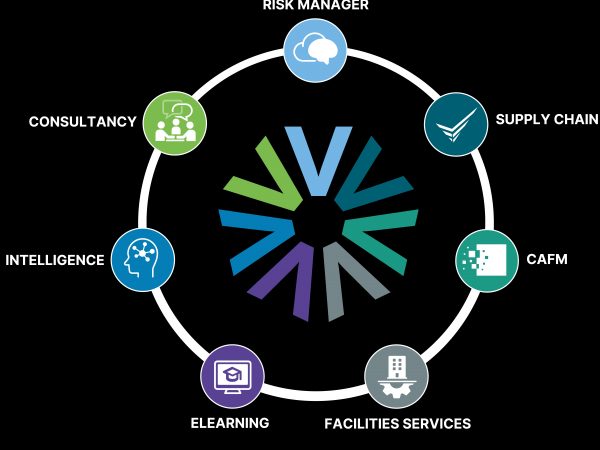Inside the CIPS conference 2025: a content manager’s perspective
09/07/2025
Last week, Vantify attended the CIPS (Chartered Institute of Procurement & Supply) Conference at the QEII Centre in London. As part of the team on-site, I had the opportunity to document the day and reflect on the insights shared throughout the event.
This retrospective takes you through the highlights, key takeaways, and lessons that matter most for procurement, compliance, and supply chain risk management.
9:30 AM – Arrival and first impressions
The day began with setup and early networking. The venue quickly filled with procurement professionals from a wide range of industries. As the CIPS Conference got underway, I joined the opening keynote session, “Inside the Mind of a Modern Procurement Leader,” delivered by Ninian Wilson, Global Supply Chain Director at Vodafone. Set within the Vision 2050 stream, the session covered topics such as geopolitical instability to the accelerating pace of AI and innovation. It was an inspiring start to the day.
10:00 AM – At the Vantify stand
After checking in with our team at the Vantify stand, I began capturing behind-the-scenes content: candid photos, short video clips, and notes from conversations throughout the day. These on-the-ground moments not only support real-time social media coverage but also feed into our broader content strategy focused on compliance, innovation, and highlighting the business-critical benefits of integration.

12:00 PM – Matt Reid on supply chain risk management
One of the key moments from the day was a talk delivered by Matt Reid, Managing Director of Vantify Intelligence. His session focused on supply chain risk management and the increasing need for proactive, data-driven approaches to compliance.
Key insights:
- Real-time monitoring is essential for mitigating supply chain risks before they escalate.
- Simplifying cumbersome compliance legislation through expert consultancy adds real business value, particularly in high-risk environments.
- Companies that take a proactive stance on health and safety compliance are better positioned for long-term sustainability and stakeholder trust.
The session drew strong engagement and sparked continued discussion in the networking spaces afterward.
Practical takeaways: 5 steps to boost your Health and Safety Compliance now
During the conference, Matt Reid was asked by the audience for five practical steps businesses could take right now to improve their health and safety compliance.
Here’s a quick recap of his advice that attendees found especially useful:
- Focus on targeted risk assessments
Rather than trying to cover everything at once, concentrate on high-impact areas. Keep your risk assessments live and actionable to spot hazards before they escalate. - Keep your team engaged
Embed health and safety into everyday operations with regular conversations, toolbox talks, and clear communication. An engaged workforce is your first line of defence. - Review policies and procedures often
Compliance isn’t a set-and-forget task. Regularly update your policies to reflect the latest standards and ensure everyone knows the current expectations. - Prioritise training and eLearning
Equip your team with the right knowledge through role-specific training – both in-person and online. Tracking completion ensures ongoing competence. - Use technology to gain visibility
Harness platforms that provide real-time insights across risk, supply chain, and facilities compliance. This enables quicker decisions and stronger control across your organisation.
These practical steps resonated strongly with delegates, highlighting how compliance is evolving from rigid checklists to dynamic, tech-enabled systems: exactly the kind of transformation Vantify supports with its integrated ecosystem.

Afternoon sessions and emerging themes
One session that stood out later in the day focused on sustainable sourcing: an area becoming increasingly relevant to Vantify’s clients. During the 45-minute panel discussion, Beata Baumann, Amy Baer MCIPS and Brett Mendell MBE spoke about ‘Scope 3’s next step: beyond tier 1 and engaging SMEs’. This was part of the sustainability and social impact stream, aimed at uncovering the driving change in supply chains.
All three speakers aligned on the growing importance of supply chain management since 2020, noting that many small business owners had not previously prioritised related topics like ESG, but that’s now rapidly changing.
Brett Mendell highlighted the value of e-learning, noting that courses are concise yet highly relevant, allowing decision makers to stay focused on driving sales. He made a pertinent point: while it’s impossible to monitor whether day-to-day decisions fully consider sustainability, delivering online materials ensures that decision makers are well-informed.
Amy Baer offers the practical advice to consolidate all information to avoid fatigue. She also advised a segmentation strategy to ensure optimal relevancy and to not overload the supply chain.
Interestingly, Beata Baumann emphasised the power of knowing your audience and emphasising with suppliers. That way, they feel appreciated. Brett lastly highlighted the need to give support but also provide a level of expectation to ensure delivery.
No longer optional
Now supply chains are under growing scrutiny for ESG (Environmental, Social, and Governance) performance, the conversation around ethical sourcing practices is no longer optional.
Another theme that emerged throughout the day was digital transformation: from cloud-based procurement tools to AI governance in vendor management. These are all areas where compliance and technology intersect – precisely where Vantify provides value.

Final reflections
Attending the CIPS conference reinforced just how central supply chain risk, data compliance, and health & safety governance have become. For Vantify, the event was an opportunity to be part of that conversation: not only by listening, but by sharing how we help organisations respond with clarity, insight, and action.
Business Development Manager Jack luckett noted:
“ESG and sustainability is a hot topic, as it has been for a few years now.
Notable comments from prospects centre around supply chain risk, international conversations, replicating standards around modern slavery and anti-bribery.”
He continued:
“The big thing we’re seeing is control around the suppliers. Replicating what they have around carbon management. Not just seeing tick box exercises eg carbon emissions. They want to see that verified with evidence to back that up. Financial and reputational risks are obvious but also genuinely doing the right thing as a business. Giving assurance to directors shakeholders and shareholders to businesses, then to clients and customers as well.”
Looking ahead
The CIPS Conference 2025 offered invaluable insights into the future of procurement, supply chain risk, and sustainability. As we reflect on these conversations, stay tuned for more follow-up content where we’ll unpack key learnings, explore emerging trends, and share how Vantify is supporting organisations with integrated products and streamlined technology.
Stay tuned for more follow-up content as we continue unpacking what came out of the event.
